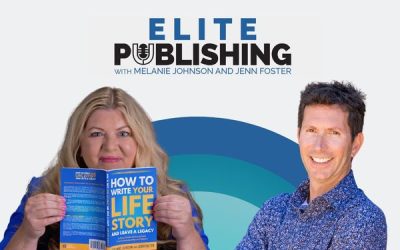There’s a big difference between being an author and being a bestselling author. Whether you are a business owner, a speaker, or a full-time author, being able to call yourself a bestseller dramatically increases your credibility. But what does that really mean?
To become a bestseller, you must appear on a bestseller list. Of course, The New York Times is one of the most famous of these lists, but there are many others, including: ABA IndieBound (ABA), The New York Times (NYT), Barnes & Noble (BAN), Publishers Weekly (PBW), The Boston Globe (BOG), USA Today(USA), The Denver Post (DPO), The Wall Street Journal (WSJ), The Los Angeles Times (LAT), WalMart.com (WAL), BN.com, and Amazon.com.
To draw from a personal example, some of my books have been on the Top 100 Amazon Bestselling Teen List and the Top 100 Amazon Bestselling Hot Releases in Teens. One of my books has a ranking in the 300 range for overall books sold on Amazon, while three have been in the 400s out of over 1 million books. (For more details, here is a complete breakdown of my Amazon bestsellers.)
What does this mean? It means that my books, because of the rankings they received at one point on Amazon, were popular enough to be on the bestseller list. For a book to rank #300 on the overall Amazon ranking means that, out of over 1 million books on Amazon, only 299 sold more copies.
However, the New York Times bestseller list is different. Not to better or worse…just different. It’s a different metrics system. No one knows exactly how this is compiled, but large publishers know certain things about getting onto the list, and that’s why you find many of the large publishers’ books on there. It is a well-known fact among publishers that the New York Times gets its book sales data from a scattered few bookstores (like the Nielsen’s) and it doesn’t take into account the actual sales of the books (which Amazon.com does in order to rank), but how many books were shipped to these particular sampling of stores in anticipation of sales.
The New York Times list heavily counts sales in select brick-and-mortar stores, so if your books aren’t in these particular bookstores, then chances of making the New York Times bestseller list are minimal. And being not as comprehensive as Amazon.com in the amount of titles overall (typically brick-and-mortar bookstores can only carry within each store itself on the average 175,000 titles) versus the 1 million plus titles Amazon.com carries, these brick-and-mortar bookstores are not able to carry all book titles to compare sales. Just last year, the New York Times began counting online sales along with books that are in brick-and-mortar. According to certain publishers and industry insiders, it takes about 20,000 books ordered during a week at these select bookstores to have a chance at the New York Times bestseller list. Savvy publishers, usually the top ones, know which bookstores. The rest of us have to guess. However, to many authors, including myself, who have sold well over 20,000 books (for me, just the Frost Series alone was over 20,000) on Amazon alone, that is a surprisingly low number. It’s nothing to sneeze about, but when you think New York Times, you typically think the book must have sold more than anyone else in all avenues, including the number one book on Amazon.
Another important difference is in the timing, as the New York Times compiles their list based on a week’s performance of a book, while the Amazon list is compiled by the hour.
Does being on Amazon.com’s bestselling list actually mean you are selling more than being on a New York Times list?
In some cases, yes. It boils down to Actual Sales (Amazon.com) vs.Anticipated Sales from select bookstores (New York Times).
While it is wonderful and prestigious to be called a New York Times bestselling author, and I applaud any author who does become one, it doesn’t mean that authors on other bestselling lists are not bestselling authors as well.
It simply means their books did not ship enough or fast enough to one of the bookstores The New York Times pulls data from.
John Locke and Amanda Hockings sold over a million books on Amazon.com. While John Locke made the New York Times list (he had the #1 bestselling book, Saving Rachel, for weeks on Amazon.com, and the rest of his series were bestsellers, he made the New York Times list, too. He also had paperback books out in stores, which can explain why he made the list). Amanda Hockings is an Amazon.com bestselling author, who did not make the New York Times bestselling list (despite selling over a million books. I know a lot of New York Times bestselling authors who are friends, and they didn’t come close to selling 1 million books like Amanda Hockings did).
So you see, the New York Times list is not always a reliable indicator of book sales.
The publishing and book world are facing some changes and challenges these days. Amazon.com is thriving. Bookstores are closing, which is very sad for many of us who grew up with a bookstore in every neighborhood.
Perhaps those who have a bias against Amazon.com and BN.com should rethink that bias and realize Amazon.com and BN.com are doing something right in this new age of publishing and reading. Savvy literary agents and publishers realize when scouting for their next big author star to look towards Amazon’s self-published authors. Amanda Hocking was discovered that way, as well as Colleen Houck, whose Tiger’s Curse books were Amazon bestsellers.
A lesson learned from watching and observing bestseller lists for anyone, including those who are writing non-fiction business books, is to take what you read, including New York Times lists with a grain of salt, as opposed to other lists.
But of course, if my books or any of my friends’ books make the New York Times bestseller list or the Amazon lists, it’s a cause for celebration.
[Image: Flickr user chotda]






0 Comments